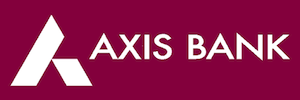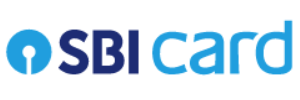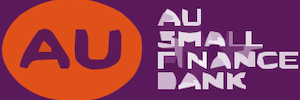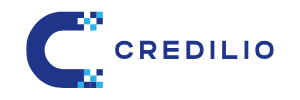Overdraft Loan in India
An overdraft loan offers a convenient way to handle short-term cash flow shortages. Available through your bank, it allows you to withdraw more than your account balance, up to a certain limit. The interest is charged only on the amount used, making it a flexible option. However, it’s crucial to use it wisely since excessive reliance could lead to financial strain. Understanding the terms associated with your bank’s overdraft facilities can help you manage funds better and avoid unnecessary fees.
| Company | Loan amount | Term of Loan | Age Limit | Apply | |
|---|---|---|---|---|---|
 | up to ₹ 15.000 | 3 – 12 months | 21 – 65 | Apply for a loan | |
| NIRA is one of India's best Instant personal Loan apps providing loans from Rs 2500 – Rs 1 Lakh in partnership with leading banks and NBFCs.To apply for a personal loan with NIRA you would need your Aadhaar number, PAN number, Salary slip and 6months bank statements. | |||||
 | up to ₹ 50.000 | 3 – 60 months | 21 – 65 | Apply for a loan | |
| Navi is one of the largest lending apps in the country and the latest venture by Sachin Bansal (formerly co-founder of Flipkart, India’s largest e-commerce player) and Ankit Agarwal (formerly a banker with Deutsche Bank and Bank of America) that plans on making financial services simple, transparent and accessible to all. Navi provides its clients with cash loans, home loans and health insurace services. | |||||
 | up to ₹ 50.000 | 3 – 36 months | 21 – 55 | Apply for a loan | |
| Fibe (formerly EarlySalary) is one of India's leading digital lending apps focused on young, aspirational and tech-savvy Indian consumers. Instant Cash Loans, Personal Loans, Online Loan, Instant Personal Loans. | |||||
 | Credit Card | 21+ | Apply for a loan | ||
| IndusInd Bank Limited is a new-generation Indian bank headquartered in Pune. The bank offers commercial, transactional, and electronic banking products and services. IndusInd Bank was inaugurated in April 1994 by then Union Finance Minister Manmohan Singh. | |||||
 | Credit Card | Apply for a loan | |||
| Axis Bank Limited, formerly known as UTI Bank (1993–2007), is an Indian banking and financial services company headquartered in Mumbai, Maharashtra. It is India's third largest private sector bank by assets and Fourth largest by Market capitalisation. It sells financial services to large and mid-size companies, SMEs and retail businesses. | |||||
 | Credit Card | Apply for a loan | |||
| SBI Card was launched in October 1998 by the State Bank of India and GE Capital. Incorporated as SBI Cards and Payment Services Limited (previously known as SBI Cards and Payment Services Private Limited), SBI Card is headquartered in Gurgaon, Haryana. | |||||
 | Credit Card | Apply for a loan | |||
| Standard Chartered PLC is a British multinational banking and financial services company headquartered in London. It operates a network of more than 1,200 branches and outlets (including subsidiaries, associates and joint ventures) across more than 70 countries and employs around 87,000 people. It is a universal bank with operations in consumer, corporate and institutional banking, and treasury services. | |||||
 | Credit Card | Apply for a loan | |||
| HSBC is one of the world’s largest banking and financial services organisations. HSBC serves approximately 40 million customers through our global businesses: Wealth and Personal Banking, Commercial Banking, and Global Banking & Markets. Our network covers 63 countries and territories in Europe, Asia, the Middle East and Africa, North America and Latin America. | |||||
 | Credit Card | 25+ | Apply for a loan | ||
| AU is a dream that was started 25 years ago by Mr. Sanjay Agarwal, a merit holder Chartered Accountant and a first-generation entrepreneur. Founded in Jaipur in 1996 as Au Financiers, a non-deposit-taking Non-Banking Finance Company (NBFC), it effectively worked on funding economic growth, especially for the under-served and un-served low & middle-class individuals. | |||||
 | Credit Card | Apply for a loan | |||
| Credilio is an official distribution partner for the distribution of Personal Loan / Credit Line products of the following Banks and NBFCs. Credilio offers a life time free SMB credit card, powered by Visa. The card comes with various lucrative deals and offers on multiple online shopping and OTA platforms. | |||||
Payment Term: The minimum period is 3 months and the maximum 18 months. Interest rate: The rate varies between 7.9% and 18.9% per month (149% to 698% per annum). Example of a loan: ₹1,500.00, to be paid in 12 months and interest rate of 10.15% per month (219% per year). Total of 12 installments of ₹221.77. Total amount payable equal to ₹2,661.18. This is a service to find and compare loan and credits. The conditions depend on the financial company, product, amount and loan duration.
Understanding overdraft loans
An overdraft loan is a flexible finance option that allows you to withdraw more money than you have in your bank account. It serves as a financial cushion when expenses exceed your balance or during unexpected financial needs. Unlike regular loans, there’s no fixed amount you need to adhere to; you can borrow up to a pre-approved limit, which provides great convenience and flexibility.
Typically, overdraft loans are linked to your bank account and offer a revolving credit line. This means you can use, repay, and use the funds again as needed. They help avoid bounced checks or failed transactions when your account runs low. Moreover, they often come with interest rates, which generally depend on the borrowed amount and duration. An overdraft can be a handy tool for managing cash flow, ensuring that short-term needs are met without a hitch. Understanding how it works can help you make smarter financial decisions, ensuring you make the most of this useful financial instrument.
Who can benefit from an overdraft loan?
Small business owners and individuals can find overdraft loans quite useful. These loans are especially helpful for those facing temporary cash shortages. Here’s a list of potential users:
- Small business owners needing extra funds for operations
- Individuals awaiting salary or other income sources
- Entrepreneurs covering unexpected expenses
- Students managing education costs during tight times
Overdraft loans provide flexibility in managing expenses without delays.
Advantages of utilizing an overdraft loan
Overdraft loans offer a unique form of financial flexibility. They’re an ideal solution when unexpected expenses arise, allowing you to cover costs without the usual stress of rigid repayment plans. This flexibility means you can use funds as needed, returning them when possible, and only pay interest on the amount you’ve utilized. Such convenience isn’t typically found with other loan types, making overdraft loans a reliable option for many.
“Overdraft loans allow you to bridge the gap between financial needs and available funds without the pressure of immediate repayment deadlines.”
Furthermore, the ease of accessing an overdraft loan makes it especially useful for short notice requirements. There’s no need to apply for a new loan each time—you have access to funds up to the overdraft limit already set. This streamlined process saves time and can be a lifesaver in emergencies, offering a level of convenience that is hard to beat. The ability to control your cash flow and respond to financial urgencies emphasizes the true value of this financial tool.
Risks Associated with Overdraft Loans
Overdraft loans can serve as a helpful tool during financial emergencies. However, they come with certain risks that need careful consideration. One of the primary risks is the high-interest rates often attached to these loans, which can quickly accumulate if not paid back promptly. Failing to manage this can lead to mounting debts that may become difficult to overcome. Over-reliance on overdraft loans might also lead to a false sense of financial security, resulting in poor budgeting decisions.
| Potential Risks | Consequences |
|---|---|
| High Interest Rates | Can lead to excessive debt if repayments are delayed |
| Over-reliance | May create financial instability and poor budgeting |
| Hidden Fees | Unexpected costs can add to financial strain |
Additionally, banks may charge hidden fees for using overdraft facilities. These fees can catch borrowers off guard, adding extra financial burden. It’s crucial to understand all terms and conditions before opting for an overdraft loan to avoid any surprises. Being informed and cautious ensures the loan serves as a benefit rather than a detriment to your financial health.
How to apply for an overdraft loan
Applying for an overdraft loan in India is straightforward. Start by visiting the website or branch of your chosen bank. You’ll need to fill out an application form, which usually requires basic details like your address, PAN card, and income proof. After submission, the bank reviews your financial standing. If approved, you could get access to funds quickly. Remember, it’s important to check terms and conditions carefully before proceeding.
“Ensure you provide accurate information for a smoother approval process.”
Overdraft loan vs. personal loan
Many people in India often wonder about the differences between an overdraft loan and a personal loan. Understanding these can help in making the right financial choice. An overdraft loan is a facility attached to your existing bank account. It allows you to withdraw money beyond your account balance, up to a pre-set limit. You’re charged interest only on the amount you overdraw, making it flexible for short-term cash needs. In contrast, a personal loan is a lump sum borrowed from a lender with fixed interest rates and regular installments. It’s ideal for bigger expenditures that require a larger amount of funds upfront.
Both loan types are suited to different needs. Overdrafts offer more flexibility for managing short-term, variable expenses. You pay interest only on what you use. Personal loans, however, provide structure, with fixed terms and payments, which can be easier to budget in the long run.
| Feature | Overdraft Loan | Personal Loan |
|---|---|---|
| Usage | Short-term expenses | Long-term expenses |
| Interest | Variable, on used amount | Fixed, on total amount |
| Repayment | Flexible | Fixed installments |
| Approval Time | Usually quick | Varies, can be longer |
Analyzing the Costs: A Balanced View on Overdraft Loan Charges
When discussing overdraft loans, a common concern revolves around the potentially high costs. On one hand, overdraft loans provide a speedy financial solution, often without the paperwork associated with traditional loans. This convenience, though, comes at a price. Some argue that the interest rates and fees can accumulate quickly, turning these loans into an expensive choice for the short-term financial relief they offer.
However, it’s crucial to weigh both the pros and cons. For those who manage repayments diligently, an overdraft loan is invaluable in addressing urgent cash needs, such as medical emergencies or unexpected expenses. Nevertheless, users must be cautious. While these loans bridge financial gaps temporarily, not fully considering the associated fees may lead to financial strain. Ultimately, being informed and cautious about the potential costs and repayment timelines can help borrowers in effectively using overdraft loans.
